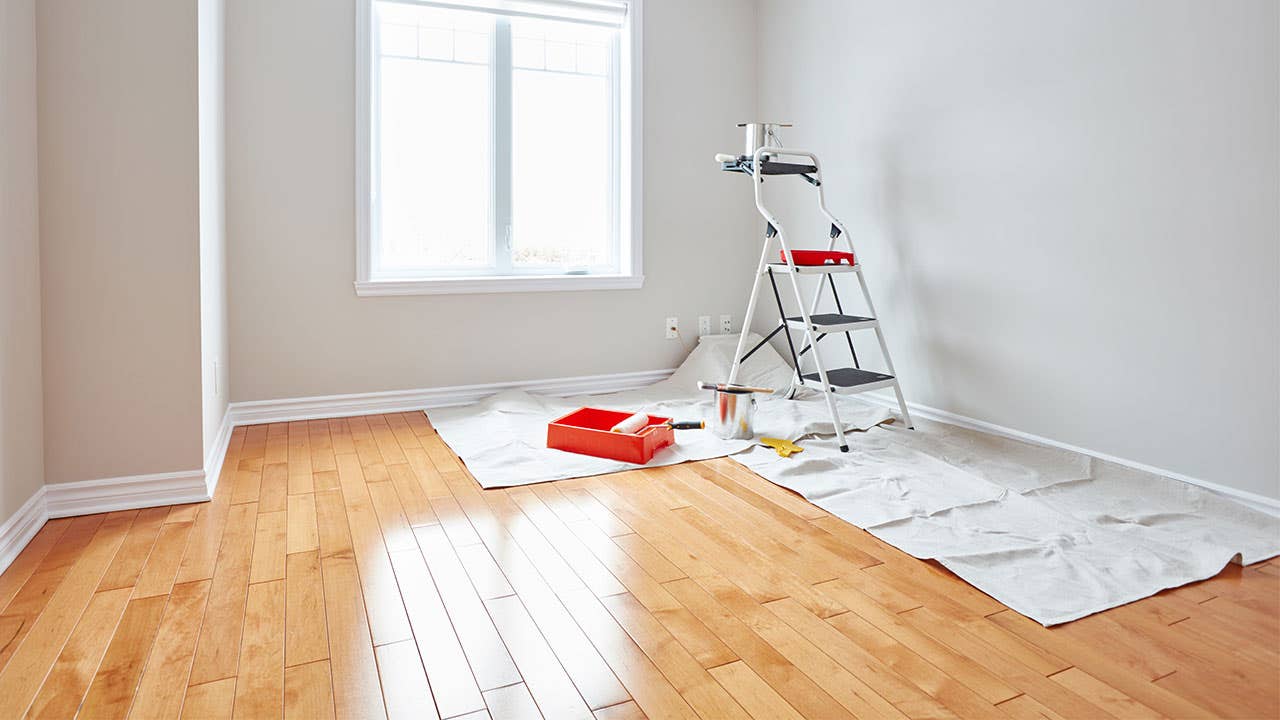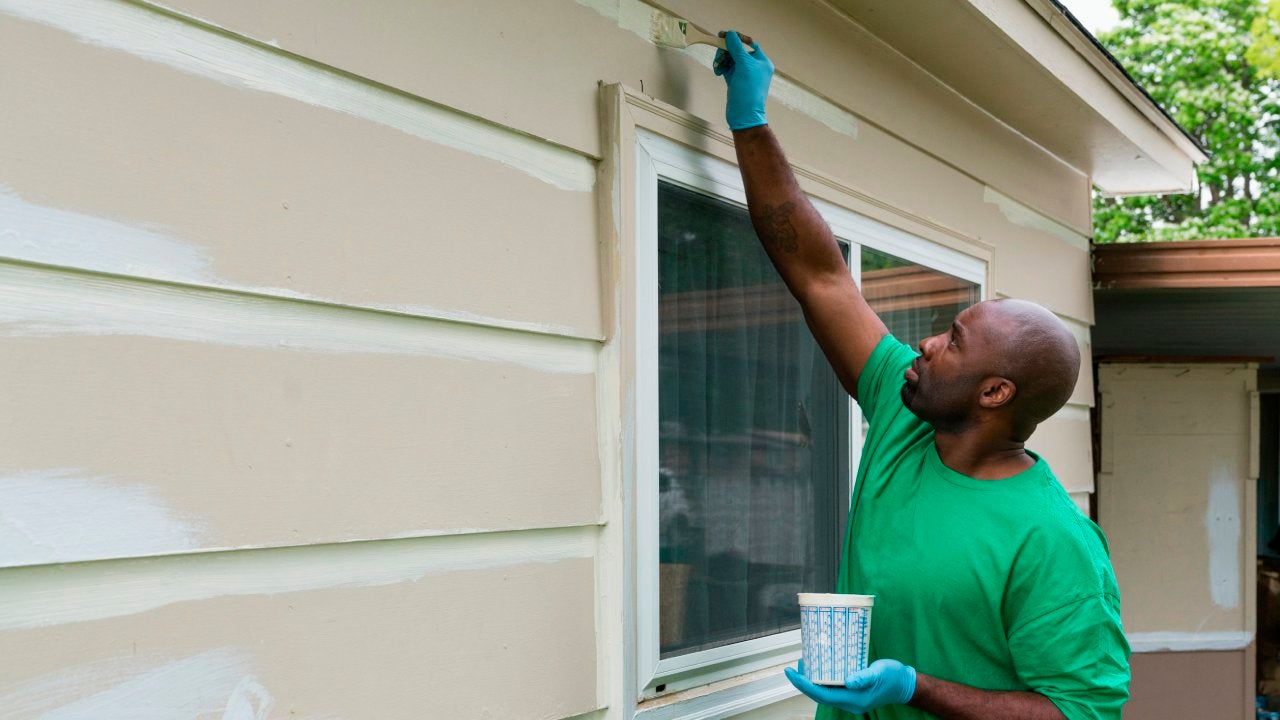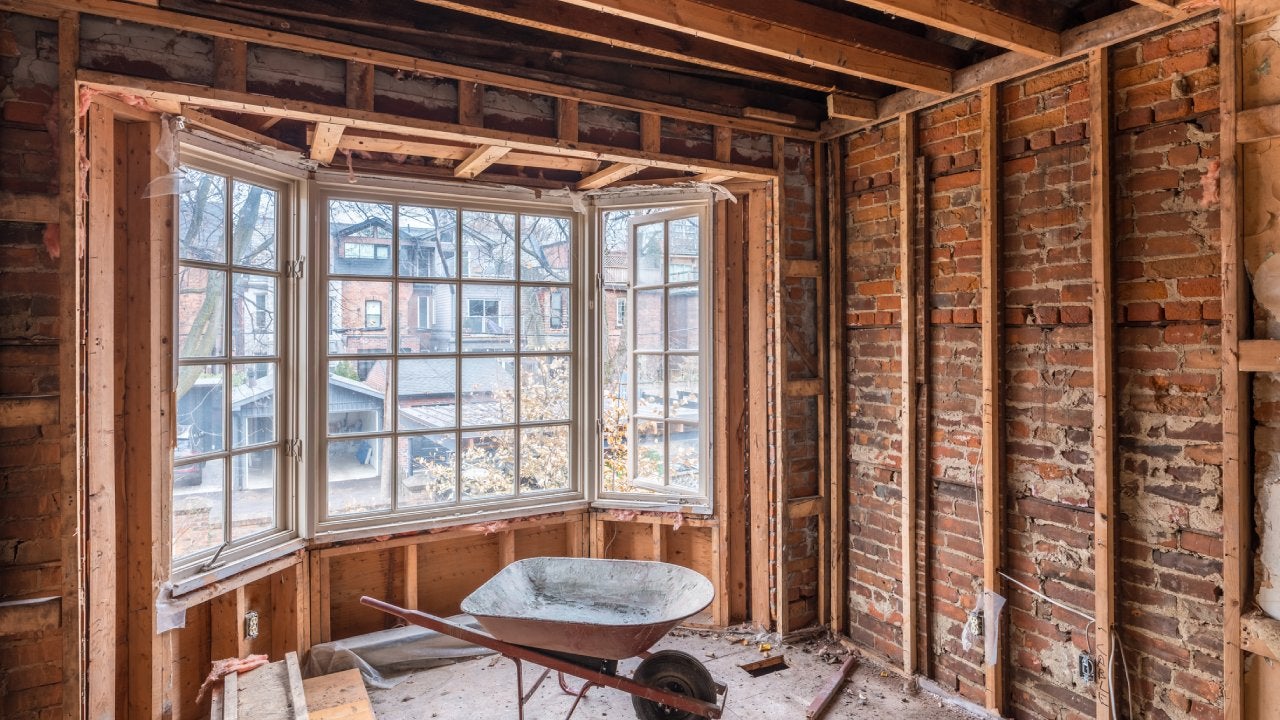The top 4 home renovation mistakes — and 4 tips for avoiding them

Planning a home renovation project requires a detailed timeline, a predetermined budget, and adequate funds financing. All too often, though, homeowners are in the midst of the remodel when they realize they have made one or more costly home renovation mistakes. These remodeling mistakes can result in cause delays, extra expenses (and emergency loans) unplanned and a whole lot of stress.
There are a variety of pitfalls that homeowners fall victim to when making home improvements. Here are the top four renovation mistakes to avoid. Steer clear of these with the four tips we offer, and you will have a good chance of completing the project without any major hiccups.
Remodeling mistake 1: not considering the home’s condition
Quite often, when setting out to make significant changes, homeowners often don’t fully understand the ramifications of their proposals and whether their homes’ infrastructures can support the redesign goals, says Bailey Carson, a home expert with Angi. If the house’s basic bones aren’t not strong enough, heavy renovations can cause time-consuming complications at best, significant damages and unexpected project overruns — or even cancellations — at worst. It’s particularly common in older homes that have not been renovated in many years.
“It’s important to ensure your home is able to withstand the renovations you want to make. While it’s fun and exciting to upgrade your space with powerful new appliances, you don’t want to finish the updates only to discover that you’ve exceeded the power load the room can handle,” Carson says. “Avoid this by working with experts like electricians, plumbers and contractors who can confirm that your project can support the water, gas, weight and electricity needs of your upgrades.”
Remodeling mistake 2: choosing the least expensive contractor
Home renovations are expensive and homeowners often try to save money by choosing the contractor who costs (or at least bids) the least. While being mindful of your budget is good, you will also want to ensure that you are not selecting a contractor based on price alone. The cheapest contractor is not necessarily the best one to do the job, because they may cut corners, letting the quality of work suffer. Sometimes homeowners who are trying to keep costs down at the expense of all else end up paying more in the long run — because they have to hire someone else to fix mistakes or redo sloppy jobs entirely.
Before awarding a job, it is always a good idea to obtain price estimates for your proposed renovation work from multiple contractors. You can also ask to see testimonials from previous clients, and even contact them to ask specific questions about their experience with a particular pro.
Remodeling mistake 3: changing your mind mid-project
“When you first start planning and the project only exists as designs on paper, it’s simple and free to make changes,” Carson says. “However, a common mistake is waiting until later on to make changes. Once the actual work starts, changes get harder and more expensive.” And the result may still fall short of your expectations.
So: Be as fussy as you want while you’re designing your remodel. Be extremely detailed and precise and consider all the options; don’t be afraid to speak up, ask questions or change your mind. After the actual work has started, though, consider everything set in stone. Even if there’s a pause or delay in the work, don’t start second-guessing decisions.
Remodeling mistake 4: not budgeting for the impact on daily life
It’s important to find ways to continue living comfortably in your home while renovation work is taking place. Carson advises homeowners to consider how they’ll handle having work crews in their homes for days or even months.
“Also remember that dust, debris, tools and extra supplies will become a regular part of your life,” Carson says. “A common mistake that can end up costing you more money in the long run is forgetting to come up with a plan for dealing with this. For instance, during a kitchen remodel, think ahead about how you’ll live and eat while your kitchen is out of commission, whether that means putting a table and fridge in the guest room or budgeting extra money for several days of takeout.”
If your project is more complex, such as adding a second story to your home, you might even need to plan for an alternative place to stay while work is being completed. Don’t forget to include these costs in your renovation budget.
4 ways to avoid home renovation mistakes
There are several steps you can take to avoid an overly stressful renovation project, including conducting research in advance, checking a contractor’s references and developing a detailed budget with a cushion for unexpected overruns built in.
1. Consider the remodel’s return on investment
When it comes to return on investment (ROI), not all home improvement projects are created equal. Some modifications will help fetch a much higher selling price when it comes time to move, but others could actually cause you to lose money on the sale.
Steer clear of installing trendy light fixtures, patterned or textured wallpaper and too much carpeting — all of these redos can reduce what potential buyers are willing to pay for a home. As a general rule, if you’re trying to maximize resale value, you should stick to neutral colors and minimal patterns. For example, one of the more common kitchen remodel mistakes is installing colorful custom tiling. While this might suit the homeowner’s taste, it could be a major turnoff for prospective buyers.
“Home improvement projects that are well planned and executed can make your home more enjoyable while you live there while also increasing your home’s resale value down the line,” Carson says. “If you’re hoping to make upgrades to your home to help sell it, focus on the things that will really wow a potential buyer and increase curb appeal.”
According to Remodeling magazine’s 2021 Cost vs. Value Report, the home renovations that return the most at resale are garage door replacements, stone veneer or vinyl siding replacements and minor kitchen remodels. Each recoups, on average, more than 70 percent of the renovation costs.
No matter what changes you ultimately decide to implement, be sure to avoid overdoing it.
“Keep in mind that there’s a point where, if you make a renovation too extravagant, the ROI will start to decrease,” Carson says.
2. Create a remodeling budget — and then add 15 percent to it
The most important part of the renovation planning process is creating a budget and identifying how you’ll pay for the project. It’s easy for spending to creep up when you’re completing a home project without carefully tracking your expenses, and before you know it, a couple of bathroom renovation mistakes could cause you to exceed what you can afford.
“Whether it’s due to an unforeseen plumbing issue, a last-minute appliance upgrade or a supply shortage, it’s unlikely that you’ll stay on track with your originally calculated budget,” Carson says.
To avoid the stress that comes with unexpected price increases during renovations, it’s a good idea to build a 15 percent cushion into your budget, Carson says. If the bottom line is still more than the funds you have on hand, home improvement loans are a great way to subsidize the project without leaving yourself strapped for cash.
3. Research contractors for your renovation
You may have heard horror stories about contractors doing poor-quality work, failing to complete projects on time or making other major remodeling mistakes. The best way to choose a good contractor is to do your research. Ask friends and neighbors for recommendations and use online sites to evaluate potential contractors in your area.
Once you’ve identified your top contractor candidates, ask each for a quote that clearly breaks down the cost of supplies and labor and the estimated time to completion. Don’t be afraid to ask for references as well; any good contractor should be able to provide at least three clients from the past five years who are willing to provide a testimonial.
“When it comes to home renovations, it’s usually true that you get what you pay for, so it’s incredibly important to talk to several contractors, read plenty of ratings and reviews and get multiple bids,” Carson says. “While it may be tempting to save money and go with the cheapest option, the unfortunate truth is that their low price may reflect low-quality work.”
4. Obtain home renovation permits
If you’re under the impression that your home renovation won’t need a building permit, you might be wrong. While small cosmetic fixes can typically be done without securing permission from the local government, any significant alterations, like knocking down a wall or remodeling a kitchen or bathroom, will most likely require a permit.
In fact, one of the more frequent bathroom renovation mistakes is thinking the project doesn’t need a permit since it’s such a small room. But any plumbing, electrical or structural modifications to a space usually do need a permit. Your contractor should be able to pull the appropriate permits for your area; just make sure to ask about this when getting quotes.
This remodeling mistake can have both short- and long-term ramifications. You’re likely to face fines for completing work without a permit or even have your project shut down entirely. Even if you manage to complete renovations without securing the right permits, you’ll probably face further consequences down the line. This could include difficulty selling the property, reduction of your home’s value or inability to get a mortgage.
The bottom line
There are home improvement mistakes that well-meaning homeowners make all the time. The key to avoiding them is to do your due diligence on your home and your contractors, to make decisions and stick with them, and most of all, to understand price and quality tradeoffs.
When budgeting for a home renovation, it’s natural to want to get as much for your money as possible. Don’t make the mistake of cutting too many corners, though. Cheap materials will show wear and tear much faster than those that are higher quality and cost slightly more, and going straight for the contractor with the lowest bid might mean the craftsmanship will be subpar. While you don’t need to splurge on every step of the project, understand that there is a balance between cost and quality. Decide what’s most important to you upfront.
Plan for every contingency in the renovation, large or small, direct or indirect. Even so, the unexpected often happens, so don’t forget to secure your project with financing that will cover you in the event of emergencies.
Learn more:
You may also like

How to buy a townhouse: 5 tips to follow

Which home improvements add the most value?

6 things to know about renovating an old house



